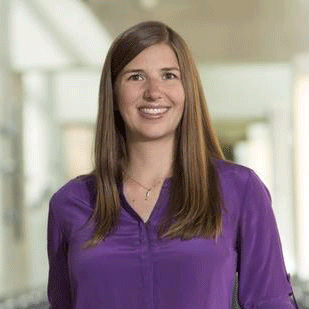My research focuses upon using novel computational and experimental tools to understand human movement and improve treatment and quality of life of individuals with cerebral palsy, stroke, and other neurological disorders.
My research strives to connect engineering and medicine to create solutions that can advance our understanding of human ability, but also translate research results to the clinic and daily life.
Affiliations
Peterson Endowed Professor and Associate Chair of Research in Mechanical Engineering
Adjunct Professor, Human Centered Design & Engineering
Director, Neuromechanics & Mobility Lab
Co-Director, AMP Lab
Founder and Faculty Advisor, HuskyADAPT
Co-Founder and Co-PI, AccessEngineering
Research highlights
Ubiquitous Rehabilitation
Ubiquitous Rehabilitation seeks to develop the sensors, algorithms, and data visualization techniques required to deploy wearable technology that can reduce the burdens of rehabilitation and improve outcomes. Biomechanical principles guide the design of hardware and software that integrate rehabilitation into daily life.
Optimizing Personalized Care
In partnership with Gillette Children’s Specialty Healthcare and funded by NIH, we are developing and testing novel methods to optimize personalized care recommendations for children and adults with cerebral palsy. Our work has developed machine learning pipelines for predicting patient-specific effects of surgical and rehabilitation interventions, as well as understanding the basic science for how movement is altered after brain injury with implications for assistive technology design and daily activities. We also are evaluating and designing interventions for young children and neuromodulation to support development, play, and long-term function.
Open-Orthoses
Open-Orthoses leverages advances in 3D-printing, scanning, and fabrication to build innovative hand and arm orthoses (aka exoskeletons). Multidisciplinary teams of engineers and clinicians work with individuals with disabilities to co-design customized devices, rigorously test the devices, and provide open-source designs that accelerate development.
AccessEngineering
AccessEngineering was founded in 2015 to (1) support and encourage individuals with disabilities to pursue careers in engineering, and (2) train all engineers in principles of accessible and inclusive design. This program has trained over 60 engineering faculty, facilitates communities of practice for engineering professionals with disabilities, and curates a knowledge base with over 100 articles for engineering students, faculty, and professionals.
Related news
- With new NIH funding, CREATE postdoc Bethany Sloane continues research for children with cerebral palsy, motor delays
- Former CREATE postdoc Sasha Portnova talks about her experiences and inspirations
- Off to the Park: A Geospatial Investigation of Adapted Ride-on Car Usage
- CREATE's Newest Ph.D Graduates
- A Ph.D. Student's Promising Research in Mobility in Cerebral Palsy
- CREATE + I-LABS: focus on access, mobility, and the brain
- Feldner and Steele's 'Reimagining Mobility' series featured in The Daily
- $1M NIDILRR award for leadership training program
- NIH Rehabilitation Research 2020
- AccessComputing shares UW CREATE's launch and work toward accessibility
